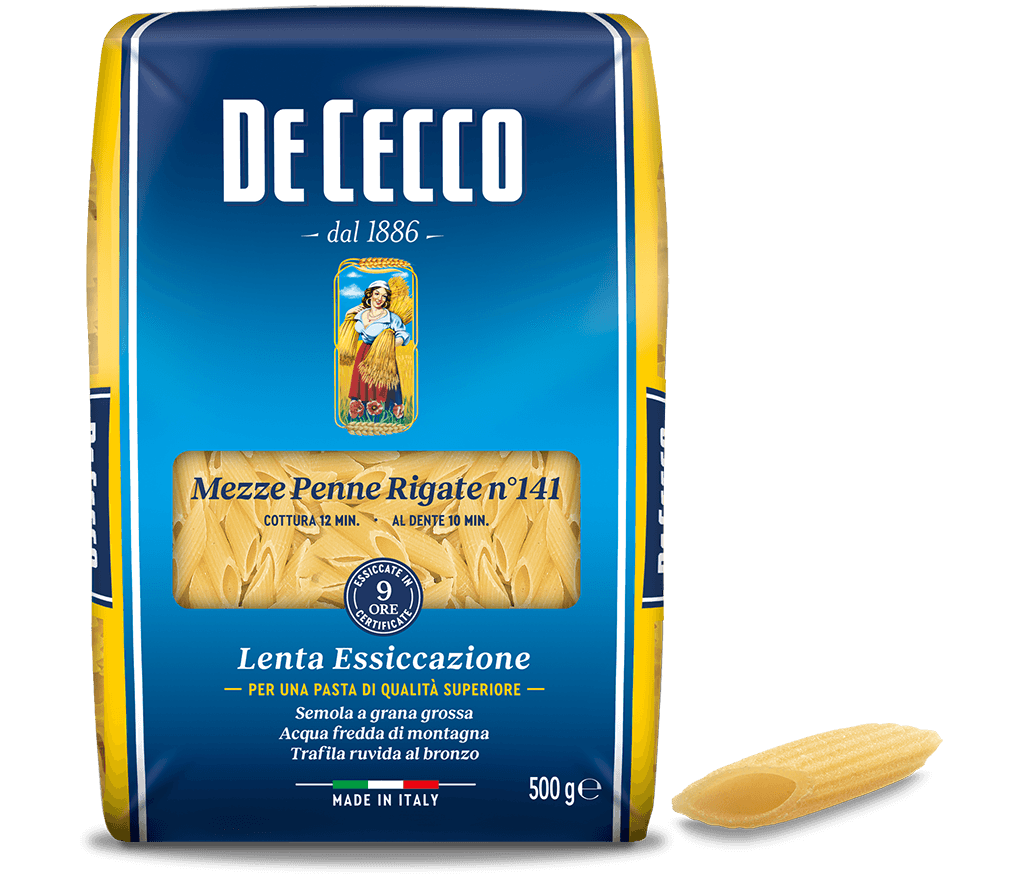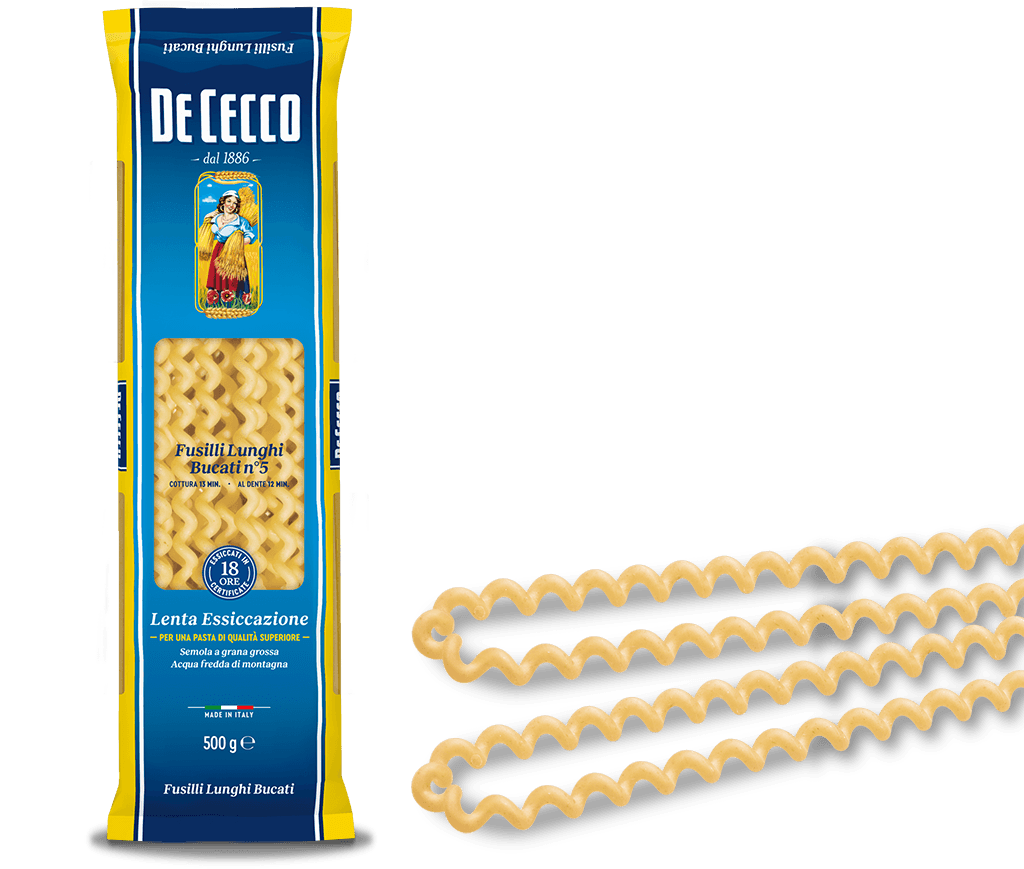Fusilli Lunghi Bucati n° 5
Fusilli Lunghi Bucati are originally from Campania and have a simple spiral shape.
In the past, Fusilli were made by hand according to a method that was passed down from one generation to the next: you had to rapidly twist a strand of spaghetti around a knitting needle with a skilled hand. The ability required to perform this procedure is reminiscent of that of spinners and as a matter of fact, the term "fusillo" comes from "fuso" (spindle) which was the typical tool used by spinners for their work.
Fusilli Lunghi Bucati are traditionally served with Neapolitan or "guardaporta" (doorman) ragù and the Neapolitan ragù known as "alla genovese" (Genoa style). Generally, this pasta is best with parmesan or pecorino (sheep's cheese) or with tomato and vegetable based sauces with aubergines and peppers.
Available in 500g packs.
- Cooking time: 13 min - Al dente: 12 min
Our method
Attention, care, experience, quality at every stage: from our mill to your table.
Mezze Penne Rigate n° 141






